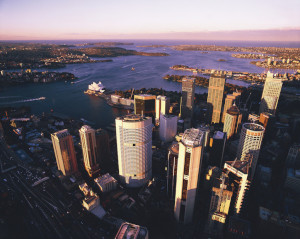Sydney’s worst performing regions revealed
Not all property markets within Sydney have benefited from the recent property boom, with new research uncovering the city’s poorest performers.

SQM Research director Louis Christopher said there is a pervasive misconception that “all areas have done very well in the Sydney property boom” – but data from the company shows this not to be the case.
“The facts are [that] there have been large regions in the Sydney housing market that have significantly underperformed [in] the average Sydney-wide recovery that has taken place since late 2012,” he said.
Mr Christopher said that while “all areas have risen”, some owners are significantly behind the rest of the pack.
SQM data highlights Sydney’s northern beaches, lower north shore and eastern suburbs as the current underperformers.
Suburbs in the northern beaches region have experienced price growth of 17.5 per cent in the past three years, significantly behind the Sydney total house price change of 23.1 per cent, according to SQM.
“Effectively, anything north of Manly and the further up the beaches you go, the flatter the recovery,” Mr Christopher said.
“Suburbs such as Curl Curl, Newport, Bayview, Avalon and others have all been rising below the average. It’s a strange turn of events in that in much of the 1990s the northern beaches was almost the leader of the pack.”
Mr Christopher said despite the area’s lifestyle appeal, the real problem lies in the region’s infrastructure.
“When it can take up to an hour-and-a-half to drive to work, that it just too much for most people. There has not been a major piece of decent road infrastructure for decades and yet the population has continued to build up,” he said.
“Until such time as there are underpasses, tunnels and a fix for the Spit Bridge (which should ultimately be a second harbour tunnel), this area is likely to underperform for the long term.
“Let’s not even talk about the train line, for there isn’t one and we are unlikely to see one in our lifetimes.”
Turning his attention to the lower north shore, Mr Christopher said this region had experienced a price loss of 8.5 per cent over the past three years.
“Now to be fair, the falls took place over the course of 2011 where this market fell by over 15 per cent,” he explained. “But even in the recovery period, the market has not done much.”
Mr Christopher said the region was simply too expensive and investors are “virtually non-existent” in the area.
“The reality is the majority of free-standing homes in the lower north shore are priced at or above the $2 million mark and this is the primary reason why this region has seriously underperformed.”
Mr Christopher said the prestige market in the eastern suburbs had also suffered with prices in the region correcting by over 20 per cent in 2011. Over the past three years, Mr Christopher said the region had experienced 9.5 per cent price growth, but expensive properties were still difficult to move.
“The one clear trend in all this is that anything where buyers are having to fork out $2 million-plus for a house is largely being rejected. Quite simply it’s just too much debt. Plus investors do not like to operate at these levels. Quite frankly prestige property is simply not an efficient investment vehicle at these levels.”
Mr Christopher concluded that Sydney families are still seeking a house with a backyard and suburbs in the city’s middle and outer ring would yield better results for investors than the inner regions.